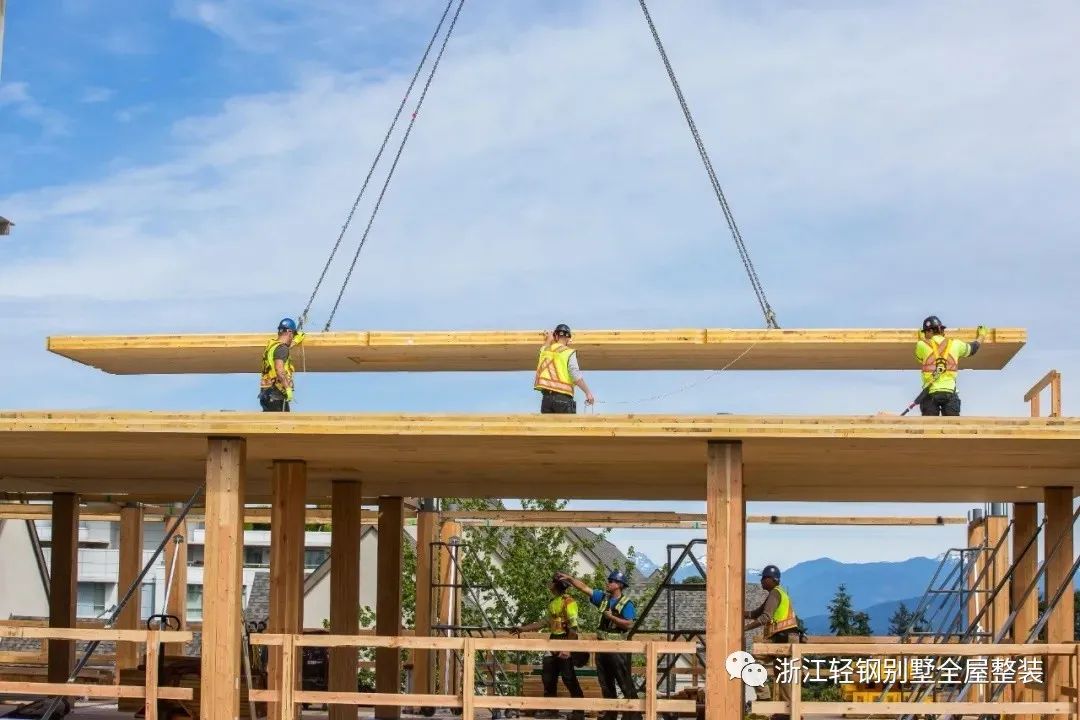This building was jointly designed by British Columbia architect Ostroy and Ontario Moriyama&Teshima Architects.
It uses the cross laminated wood (CLT) technology invented by Austrian and German scientists in the 1990s.
This tower, which looks “not like a wooden structure at all”, was the tallest wooden building in the world at that time when it was built, and now ranks third in the world only after Ascent MKE residential building (87.0 meters) in Milwaukee, Wisconsin, USA and Mj ø st | rnet (85.4 meters) in Norway.

However, with the progress of science and technology, Alberta will take the lead in relaxing restrictions in 2019, allowing the construction of timber buildings with 12 floors or less, and the federal building code will also make similar changes in 2020.

As early as the 1986 Vancouver World Expo, Canada creatively built the Canada Pavilion with 4000 cubic meters of Canadian redwoods.

In 2017, with the promotion of local architect Michael Geller, Brock Commons Tallwood House, a 53 meter high, 18 story wooden structure tower, was built in UBC University campus in the western province of British Columbia as the first-year student dormitory of UBC University.
In December 2021, the groundbreaking working hours were praised by supporters as “the miracle of changing the Toronto skyline”.
These woods are not only collected from Vancouver, which is rich in timber, but also from British Columbia, where Vancouver is located, to save transport capacity and reduce consumption.
Someone said that “80% of Canadians’ houses are wood structures”, which is not an exaggeration, because all independent houses, urban houses, and most apartments with 6 floors and below in Canada are wood structures, and these three kinds of buildings are the most common residential forms for urban and rural residents in Canada.
According to Canadian building codes, most buildings in the country, including apartment buildings with five floors and below, use wood structures as much as possible.
Therefore, Canadian talents dare to challenge high-rise wood buildings.
But so far, there are not many new high-rise wooden buildings in various places: Ontario, which has the largest population and the most developed economy, has only 10 floors of the highest wooden building, The Arbour Multifunctional Residential Building of George Brown College in Toronto.
Brock Commons Tallwood House was approved exceptionally in the form of three-level “special exemption” of the federal, provincial and UBC campus after strict identification.
These two large wood structure buildings both use the whole wood structure rarely seen in large buildings.
There is a high demand for “using wood as much as possible” in the society.
All wood building materials were cut and processed into CLT by Nordic Structures, Canada’s No.
1 wood building materials manufacturer, in Chantiers Chibougamau Building Materials Factory, 700 kilometers north of Montreal, Quebec Province.
In principle, building materials produced 800 miles away should not be used.
Canada is rich in forest resources and wood buildings are very common.
Because of the iron frame binding method, this magnificent wooden structure building was easily decomposed after the World Expo, and most of the building materials were used to build apartments Other buildings, such as office buildings, make Canadian wooden buildings famous all over the world; In the 2010 Vancouver Winter Olympics, Canada built the West Wing Building of the International Convention and Exhibition Center and Vancouver Speed Skating Hall, which are known as “new green wood structure buildings”.
Canada is also a country where the green, environmental protection and ecological movement is very prosperous.
The building was designed by BrockCommons Tallwood House and the design team was full of people.
In addition, non load-bearing parts are made of wood that is processed and reused after being eaten by worms, In order to reduce waste as much as possible and reduce the amount of timber felling.
In addition, local trees with short growth periods should be used as much as possible.
This is not only because traditional technology and building materials do not support the popularization of high-rise timber structures, but also because it is difficult to prevent high-rise timber structures from fire.
The reason for this is that the federal and provincial building codes stipulate that timber structure buildings should not exceed six floors at most.
These are all for the protection of local industries and environmental protection.
The authorities are worried that in the event of a fire, The high-rise wooden tower will become a terrible “urban torch”.
It is a typical “factory wood structure high-rise”, which is considered by many to be “the development direction of high-rise wood buildings”..
But before 2020, except Brock Commons Tallwood House, Canada has not seen particularly striking high-rise timber buildings.
This new wood structure technology can be used to glue smaller wood blocks into solid beams and fire-proof boards, It effectively overcame the weakness that traditional “2X4” wood building materials do not support high-rise buildings due to their strength and versatility.



